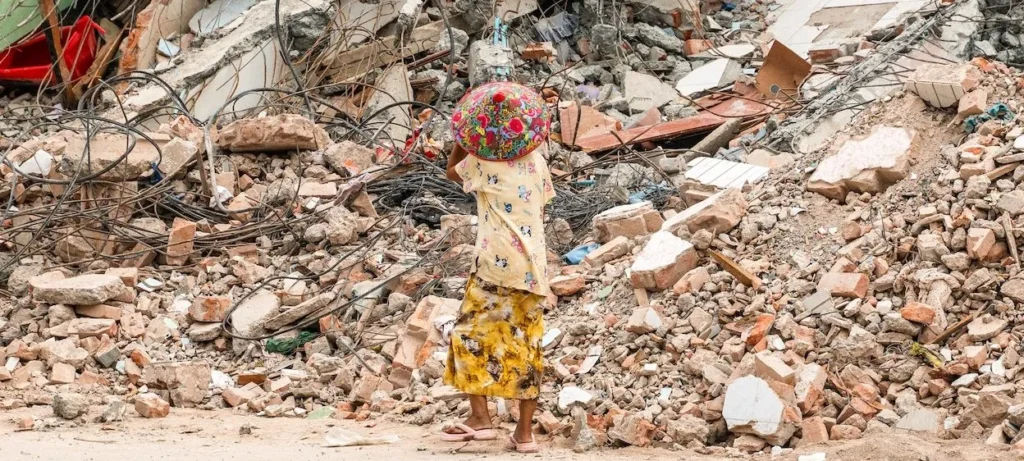
The devastating earthquake that struck central Myanmar on 28 March caused widespread destruction in Mandalay and Sagaing regions, as well as Naypyidaw Union Territory. By mid-April, the confirmed casualties numbered 3,649 dead and 5,018 injured. The earthquake destroyed 1,850 buildings in Sagaing and Mandalay and damaged another 2,250. These figures likely understate the earthquake’s true impact as casualties and damage outside areas controlled by the State Administration Council (SAC) are underreported due to restrictions.
The urgent humanitarian situation following the earthquake presents challenges which will likely persist despite responses from several countries, including neighbours. Beyond the humanitarian crisis, the earthquake threatens to compound Myanmar’s economic malaise. Unless the SAC rethinks its economic approach, the earthquake aftermath may lead to increased poverty and inflation, and decreased exports and productive capacity, with effects lasting years.
The direct effects of the earthquake are significant. Beyond the tragic loss of life, the economic impact of the destruction to property, capital, and infrastructure is harrowing. Mandalay, upper Myanmar’s economic hub, is the nexus of the region’s supply chain. Its industrial zones and logistical parks are home to thousands of businesses. Initial mapping shows dozens of those businesses damaged by the earthquake. The extensive damage and destruction of infrastructure, including roads, bridges, telecommunications, and electricity, affect areas under SAC control and under non-state authorities. A historical bridge connecting Sagaing and Mandalay was destroyed and another damaged, limiting traffic to small trucks and blocking access to the river port near Mandalay.
This damage leads to disruptions that affect not just earthquake relief, but also important supply chains, especially agriculture. Myanmar’s dry zone is the leading growing area for pulses, oilseeds, and cereals (such as sesame, pigeon peas, and chickpeas), many of which are planted in May. Disruptions in logistics that reduce farmers’ access to inputs or raise those prices could affect planting (and harvest), potentially hurting farmers’ incomes in an already poor, vulnerable region.
Destruction and loss of life in the capital, Naypyidaw, may cause delays and disruptions to services. Government buildings and staff accommodation were reportedly hard-hit, with numerous civil servants injured or killed. This could delay services such as food safety certifications for the export of agricultural goods. The SAC’s centralised economic control may exacerbate effects, especially if it affects functions such as trade licensing.
The damage and disruption caused by the earthquake will have major macroeconomic and socioeconomic consequences, including increased poverty and reduced incomes. Exports could decrease, straining Myanmar’s limited foreign exchange reserves and putting downward pressure on the exchange rate (though incoming foreign assistance may partly counteract this). This increases the risk that the SAC, which depends on the multiple exchange rate system to access foreign exchange, will tighten restrictions or seek it elsewhere. This could exacerbate already challenging business conditions and increase poverty. Demand for imports to assist earthquake recovery will increase, though the SAC’s strict import licensing may constrain inflows. The country’s insurers also face challenges, as many of them kept significant risk on their books, partly because of difficulties obtaining reinsurance due to sanctions, foreign currency constraints, and the withdrawal of some international insurers.
Despite the socioeconomic challenges, Myanmar’s people will likely bear most of the cost of rebuilding. Insurance payouts will be limited due to the low penetration rates for insurance in earthquake-affected areas. The SAC also has limited capacity to fund reconstruction costs. Even before the earthquake, the World Bank noted that fiscal pressures were elevated due to a deficit of 5.4 per cent of GDP. Fewer businesses are paying taxes, down from about 40 per cent before the coup to 21 per cent in 2024. Tax revenues are low and barely growing, up just 9 per cent to 9.4 trillion kyats last year from 8.6 trillion kyats in 2021. This is despite inflation, which has tripled prices over the same time. This revenue position will likely decline further in earthquake-affected areas, at least temporarily.
The SAC faces similar challenges in borrowing money. Since the coup, most borrowing has been domestic, mainly from the regime’s Central Bank. Myanmar’s banks, businesses, and people are unlikely to buy bonds to support rebuilding for many reasons. For example, interest rates are hovering between 7.5 per cent and 8 per cent, far less than inflation, which is running at 30-35 per cent (in essence, this penalises bondholders). Given this, the SAC has few domestic options to fund rebuilding. They may opt to print money, though this will stoke inflation and risk exacerbating challenges.
International assistance will likely be insufficient for the scale of the problem. International assistance, still incoming, is limited, especially compared to the 7 billion euros mobilised for the 2023 Turkey-Syria earthquake. International lending to the SAC may be subdued, since donors and international financial institutions that have not engaged with the regime since the coup would be reluctant to lend to the regime. There are fears that the SAC’s multiple exchange rate system will reduce the benefits of foreign assistance and help the regime. Before the earthquake, foreign assistance providers often lost about 10 per cent of their incoming funds due to this system. There are pressing concerns that aid is not reaching areas controlled by non-state authorities. Perhaps the most significant concern is that the SAC might misappropriate earthquake recovery funds for other uses.
The bigger question is whether the SAC’s changes to the economic system discourage reinvestment. Due to changes such as trade licensing, price controls, and multiple exchange rates, Myanmar’s economic system no longer rewards productive investment as it did five years ago. This could discourage reinvestment, especially for marginal businesses that got by with paid-off capital but would be unviable with new capital costs. All these threaten to leave a lasting scar from the earthquake: a central Myanmar with diminished economic capacity and intractable, serious poverty.
Thank you for reading! Visit us anytime at Myanmar.com for more insights and updates about Myanmar
